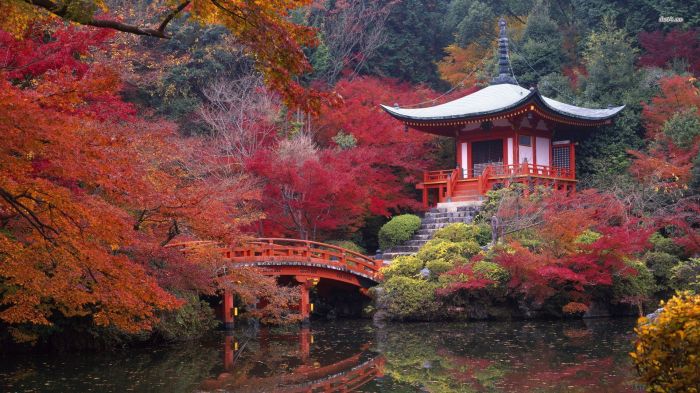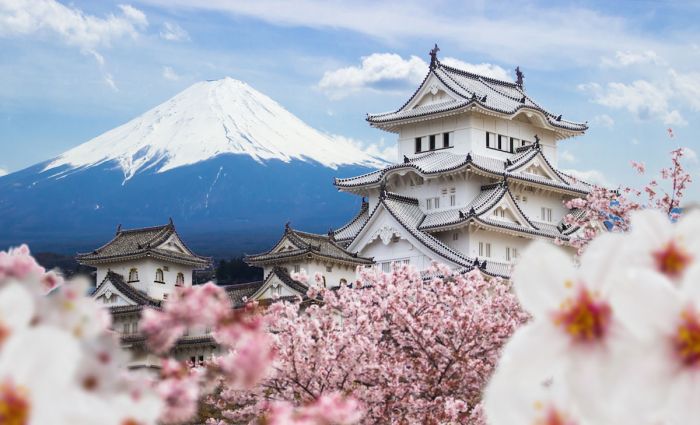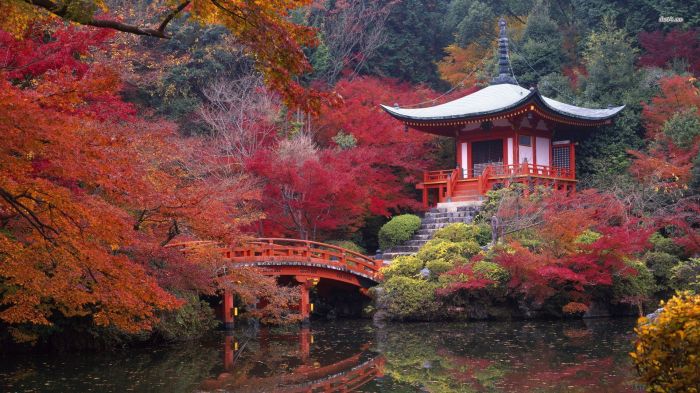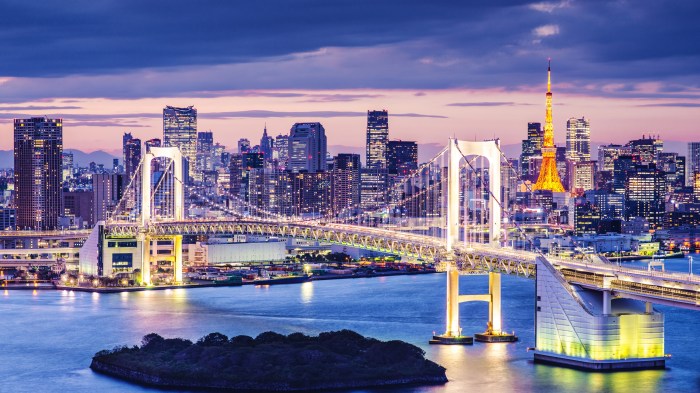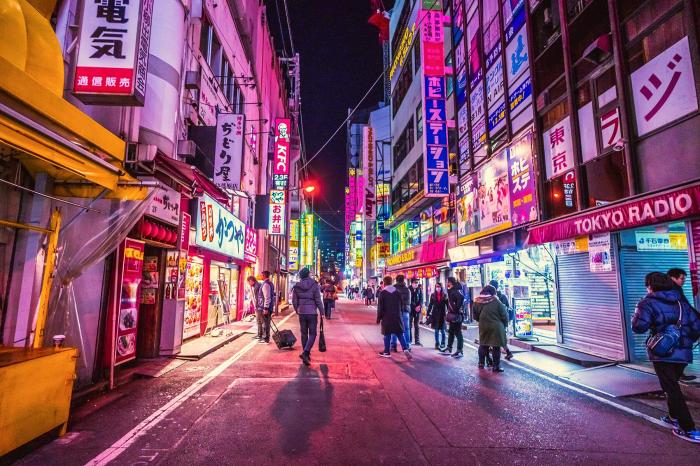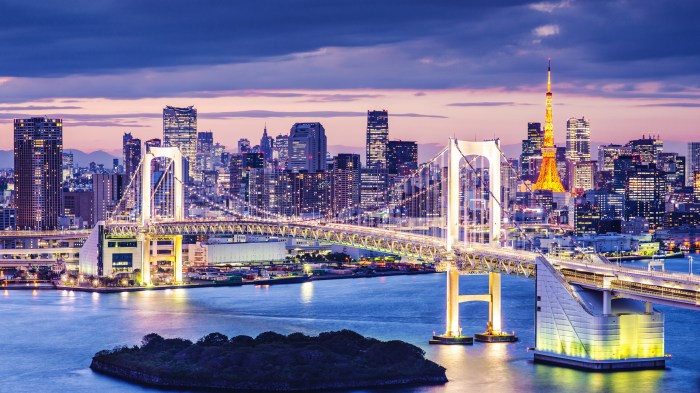Guide to taking taxi in Japan. Navigating Japan’s bustling cities by taxi can be a thrilling experience, but understanding the nuances of the system is key. This comprehensive guide dives deep into everything you need to know, from the various taxi types and fare structures to essential etiquette and cultural considerations. Whether you’re a seasoned traveler or a first-time visitor, this guide will equip you with the knowledge and confidence to confidently hail a taxi, communicate with drivers, and experience the Japanese taxi system like a local.
We’ll explore the different ways to hail a taxi, including apps and traditional methods, along with the common phrases you’ll need to communicate your destination. We’ll also discuss the fare structures, payment options, and important etiquette for interacting with drivers. This guide will provide detailed steps for both Japanese and English speakers, making it accessible to all. Moreover, it covers essential considerations for tourists, providing solutions to potential issues and comparing taxis to other transportation options in Japan.
Introduction to Japanese Taxis: Guide To Taking Taxi In Japan
Japanese taxis are a vital part of the transportation system, offering a convenient and often reliable way to navigate the country’s cities and towns. Their unique characteristics, including strict regulations and a strong emphasis on customer service, contribute to a distinctive experience. This section will delve into the specifics of the Japanese taxi industry, covering fare structures, payment methods, taxi types, and the hailing process.Japanese taxis are known for their efficiency and dependability.
Drivers are typically well-trained and adhere to strict rules regarding service standards, contributing to a high level of passenger satisfaction.
Fare Structure and Payment Methods
Japanese taxi fares are calculated based on a combination of distance and time. The initial fare (called the “base fare”) covers a set amount for the first few kilometers or minutes of travel. Subsequent distance or time increments are charged at a fixed rate, which varies depending on the specific taxi type. Many taxis display these rates clearly on the inside of the vehicle.
Exact payment is generally expected; however, credit card payment is becoming more common, particularly in major cities. Cashless payments, including mobile payment systems, are also frequently accepted.
Taxi Types
The Japanese taxi industry encompasses various types of vehicles, each catering to different needs and preferences. Regular taxis are the most common type and offer a standard service. Black cabs, or “kuro-kabi,” are another category, often associated with more luxurious or premium services. Some taxis are specifically designed for wheelchair users, guaranteeing accessibility.
Taxi Hailing Process
There are several ways to hail a taxi in Japan. Traditional methods include standing at designated taxi stands or waving down a taxi on the street. Increasingly popular are taxi-hailing apps, which provide real-time information about taxi availability and estimated arrival times. These apps often integrate with mobile payment systems, streamlining the payment process.
Comparison Table
| Taxi Type | Fare Structure | Payment Methods | Hailing Methods |
|---|---|---|---|
| Regular Taxi | Based on distance and time; initial fare followed by incremental charges. | Cash, credit cards (increasingly common), mobile payment systems. | Taxi stands, street hails, taxi apps. |
| Black Cab | Similar to regular taxis but often with a higher base fare and potentially more expensive incremental rates. May offer additional services. | Cash, credit cards, mobile payment systems. | Taxi stands, street hails, taxi apps. |
| Accessibility Taxi | Similar fare structure to regular taxis, but may have specific surcharge or reduced rates based on the need. | Cash, credit cards, mobile payment systems. | Taxi stands, street hails, taxi apps. |
Navigating Taxi Services
Getting around Japan by taxi is a convenient and often enjoyable experience. Understanding how to hail a taxi, communicate your destination, and navigate the nuances of Japanese taxi etiquette will make your journey smoother and more pleasant. This section focuses on practical steps for using taxi services in Japan, including app usage, communication techniques, and the importance of clear directions.
Using Taxi Apps and Calling Directly, Guide to taking taxi in japan
Japanese taxis are increasingly accessible through apps, offering a convenient alternative to hailing taxis on the street. Using these apps often simplifies the process, especially for those unfamiliar with Japanese. Alternatively, direct calls to taxi companies remain a viable option, particularly for those who prefer traditional methods or are in areas with limited app availability.
Common Phrases for Ordering and Communication
Mastering a few key phrases can significantly enhance your interaction with taxi drivers. Clear communication is crucial, especially when providing directions or specifying your destination. Understanding these phrases allows for a more efficient and enjoyable taxi ride.
Common phrases include:
- タクシーをお願いします (Takushī o onegaishimasu): Please call a taxi.
- 〇〇までお願いします (〇〇 made onegaishimasu): Please take me to〇〇.
- 〇〇駅までお願いします (〇〇 eki made onegaishimasu): Please take me to 〇〇 Station.
- 〇〇方面へお願いします (〇〇 hōmen e onegaishimasu): Please take me towards 〇〇.
- 〇〇へお願いします (〇〇 e onegaishimasu): Please take me to 〇〇.
- お釣りはいくらですか (O-tsuri wa ikura desu ka): How much is the change?
- ありがとうございます (Arigatō gozaimasu): Thank you.
Communicating Directions to Drivers
Accurate directions are paramount for a smooth taxi ride. Using landmarks, addresses, or a combination of both can greatly assist drivers. If you’re unsure about an address, consider providing landmarks or nearby stations.
- Using Landmarks: Instead of simply saying “the store,” specify the store’s name and its location relative to a well-known landmark, such as “the store next to the red building on the corner of the park.” This will ensure the driver has a clear understanding of your destination.
- Using Addresses: If you have the address in Japanese, clearly and calmly provide the details. If not, consider using a map app, or write down the address in Japanese.
- Using Map Applications: Many taxi drivers are comfortable receiving directions from a map application. If you have a map application with a translation feature, you can guide the driver using the app and your device.
GPS and Map Applications in Taxis
Modern Japanese taxis often utilize GPS systems and map applications to assist drivers in navigating. While these systems are helpful, clear communication remains vital, particularly in unfamiliar areas.
Navigating Japan’s taxi system can be surprisingly straightforward, especially if you know the basics. For instance, you’ll find that taxis are readily available in most urban areas. However, if you’re curious about a completely different historical mystery, you might want to delve into the intriguing question of why there’s a pyramid in Memphis. why is there a pyramid in memphis is a fascinating read.
Ultimately, a good understanding of the taxi system will make your Japanese travels much smoother.
Importance of Clear Communication
Clear communication is essential for a smooth and successful taxi ride. It’s vital to ensure the driver understands your destination, avoiding misunderstandings and potential delays.
Taxi Ordering and Navigation: A Guide
| Method | Steps | Example Phrases | Considerations |
|---|---|---|---|
| Using a Taxi App | 1. Open the app, select your destination, and confirm. 2. Provide any necessary details (e.g., pickup location, luggage information). | Confirm your destination with the app. | Ensure the app is correctly set up in Japanese. |
| Calling a Taxi Directly | 1. Call the taxi company. 2. Give your destination clearly, using landmarks or addresses if possible. 3. Confirm the details. | “Please send a taxi to the hotel near the park.” | Be prepared to give directions in Japanese. |
| Using Landmarks | 1. Identify prominent landmarks near your destination. 2. Describe the location of your destination in relation to these landmarks. | “The restaurant is across the street from the big clock tower.” | Ensure landmarks are easily recognizable. |
| Using Addresses | 1. If possible, provide the address in Japanese. 2. Verify the accuracy of the address with the driver. | “Please take me to 123 Main Street.” | Ensure the address is correct and easily understandable. |
Taxi Etiquette and Culture

Taking a taxi in Japan is more than just a mode of transportation; it’s an experience steeped in cultural nuances. Understanding these subtleties can enhance your journey and foster positive interactions with Japanese taxi drivers. Respect for others, clear communication, and a mindful approach are key to a smooth and pleasant taxi ride.
Common Japanese Taxi Etiquette
Japanese taxi drivers are generally known for their professionalism and courtesy. Maintaining a respectful demeanor is essential. This includes using polite language, showing appreciation for their service, and acknowledging their efforts. The culture emphasizes nonverbal cues and subtle politeness, making understanding the subtle expectations crucial.
- Using polite language: Using phrases like “sumimasen” (excuse me) and “arigatōgozaimasu” (thank you) will enhance your interactions. These phrases are integral to demonstrating respect.
- Clear communication: Providing clear directions and destinations in Japanese or using a translation app is recommended. This shows consideration for the driver’s time and reduces potential miscommunication.
- Respectful posture and demeanor: Maintaining a respectful posture, avoiding loud conversations, and showing consideration for the driver’s space are important aspects of the etiquette.
Tipping and Payment
Tipping is not customary in Japanese taxis. Drivers are compensated appropriately for their services. Paying the fare directly to the driver upon arrival is the norm. Exact change is often appreciated, but it is not expected. Paying with a credit card is increasingly common, and drivers should be equipped to handle such transactions.
Handling Luggage and Special Needs
If you have luggage, inform the driver beforehand. They can assist with loading and unloading. For individuals with special needs, communicating those needs beforehand is important. For instance, if you need assistance with entering or exiting the vehicle, or if you have mobility issues, clearly informing the driver will ensure a smooth and supportive ride.
Examples of Polite Interactions
“Sumimasen, doko made desu ka?” (Excuse me, where to?)”Arigatōgozaimasu.” (Thank you.)”Yoi desu ka?” (Is it alright?)
Understanding Cultural Nuances
Japanese culture prioritizes politeness and consideration. Understanding this cultural context allows for a more harmonious and respectful interaction with taxi drivers. Avoiding overly boisterous behavior or demanding actions is crucial for a positive experience.
Table of Taxi Etiquette
| Situation | Expected Behavior | Etiquette Examples | Cultural Context |
|---|---|---|---|
| Requesting directions | Speak clearly and politely | “Sumimasen, doko made desu ka?” (Excuse me, where to?) | Politeness and clear communication are valued. |
| Luggage assistance | Inform the driver about luggage | “Sumimasen, nani ka nimotsu ga arimasu.” (Excuse me, I have some luggage.) | Showing consideration for the driver’s help. |
| Special needs | Inform the driver in advance | “Sumimasen, watashi wa tsukarete imasu.” (Excuse me, I am tired.) | Drivers are expected to assist if needed. |
| Payment | Pay the fare directly to the driver | “Kono kudasai.” (Here you go.) | Direct payment is the norm. |
Special Considerations for Tourists
Taking a taxi in Japan can be a fantastic way to explore the country, but it’s crucial for tourists to understand the nuances to ensure a smooth and enjoyable experience. Knowing how to navigate the system, communicate effectively, and anticipate potential issues will make your taxi rides stress-free. This section offers practical tips and solutions for tourists, focusing on communication, potential problems, and utilizing taxi apps or calling directly.
Ensuring a Smooth Taxi Experience
Japanese taxi services are generally reliable and efficient, but tourists should take precautions to avoid misunderstandings. Pre-trip preparation can significantly improve the ride. Knowing basic Japanese phrases, like “Please,” “Thank you,” and “How much is it?”, is always appreciated. Consider having a translation app readily available, or even a printed phrasebook, for added convenience. Carrying a small notepad and pen can help jot down directions or prices, particularly if you are unfamiliar with the area.
Navigating Japan’s taxi system can be a breeze if you know the ropes. Knowing the best deals for your spring break trip is equally important, like finding great JetBlue deals for Miami, Tulum, or Orlando, for example. Jetblue spring break deals miami tulum orlando are a must-check for any budget-conscious traveler! But back to the taxis: Always confirm the fare before hopping in, and remember that a credit card is often the most convenient way to pay.
Navigating the Taxi System Without Japanese
Communication is key when you don’t speak Japanese. Using a translation app like Google Translate or similar can be invaluable. Try to write down the destination address in Japanese characters if possible. If not, taking a picture of the address or using a GPS app to get the address in Japanese is a viable option. Using a taxi app that supports English or other languages is also a good alternative.
International Taxi Services and Availability
While most taxis in Japan don’t offer explicit international services, many drivers are able to communicate in English, especially in tourist areas. Using a taxi app, particularly those that translate or have English support, can often facilitate communication even if the driver does not speak English fluently. This is particularly helpful for navigating unfamiliar areas or locations with complex addresses.
Common Tourist Issues and Solutions
Tourists might encounter issues with understanding fares, destinations, or communicating their needs. Using a taxi app can help pre-emptively address potential problems, as the app can often display the estimated fare, route, and the taxi’s progress in real-time. If a driver doesn’t understand your request, using gestures or pointing at landmarks, and if possible, using a translation app to communicate more precisely, can help.
Using Taxi Apps and Calling Directly in English
Many taxi apps in Japan offer English support, allowing you to input destinations and communicate with drivers directly. Download a reliable taxi app beforehand and ensure it’s updated. If using a taxi app, provide the destination address in the app. If calling directly, provide the address clearly and repeat it back to ensure accuracy. Try to provide directions using simple terms, landmarks, or nearby street names, or write the destination address down on a piece of paper.
For complex destinations, consider using a GPS app to get clear directions in Japanese.
Table: Addressing Potential Issues
| Issue | Solution | Steps | Alternatives |
|---|---|---|---|
| Difficulty communicating the destination | Use a translation app or write down the destination in Japanese characters | 1. Open the translation app. 2. Input the destination address. 3. Show the translated text to the driver. | Use a taxi app, point to landmarks. |
| Understanding taxi fare | Ask for the fare estimate before getting in the taxi or using a taxi app | 1. Ask the driver “How much is it to [destination]?” 2. Use a translation app to confirm. | Use a taxi app for estimated fares. |
| Driver doesn’t speak English | Use a translation app, point, or use simple gestures | 1. Open the translation app. 2. Speak or type the request in the app. 3. Point to the destination if possible. | Use a taxi app that supports English or other languages. |
Alternative Transportation Options
Japan’s public transportation system is renowned for its efficiency and convenience. From high-speed bullet trains to extensive networks of local trains and buses, navigating the country is remarkably straightforward. However, there are situations where a taxi might be the more suitable choice. This section explores the comparative advantages and disadvantages of various transportation methods, helping you determine the best option for your needs.Understanding the nuances of different transport options is key to maximizing your travel experience.
Factors like time constraints, luggage weight, and desired destinations influence the most effective choice.
Comparing Taxis with Other Transportation Options
Taxis offer a direct route to your destination, eliminating the need to transfer between different lines of public transport. However, this convenience comes at a cost, often higher than other options. For shorter distances within a city center, trains or buses can be faster and more economical. The suitability of each method depends on individual circumstances.
Navigating Japan’s taxi system can be surprisingly straightforward, especially with a little preparation. Knowing the basics of fares and payment methods is key. However, if you’re looking for a truly immersive cultural experience, exploring the diverse landscapes and vibrant local life of Northeast India might be a great alternative. Check out best things to do north east india for some inspiration.
Ultimately, the best way to get around Japan by taxi is to be aware of the various options available, and be prepared for your journey.
Situations Favoring Taxis
Taxis are often the best choice for travelers with heavy luggage, when time is critical, or for navigating unfamiliar areas. If you need to travel to a remote location or a place not easily accessible by public transport, a taxi is a reliable option. For example, if you’re traveling with multiple people or a large amount of luggage, the space and comfort offered by a taxi are valuable.
Additionally, if you need a ride at odd hours or when public transport is unavailable, a taxi can provide essential mobility.
Alternative Transport Methods in Japan
- Trains (Shinkansen & Local Lines): Japan’s bullet trains (Shinkansen) are a marvel of speed and efficiency, connecting major cities rapidly. Local train lines offer extensive coverage within cities and between towns. Pros: Fast, efficient, and extensive network. Cons: Can be crowded during peak hours, potentially requiring transfers for longer journeys. Example: A journey from Tokyo to Kyoto by Shinkansen can take approximately 2.5 hours, significantly faster than other modes of transport.
Cost: Train tickets vary greatly depending on distance and class. Time: Generally faster than buses or taxis for long-distance travel.
- Buses: Buses are a cost-effective option for traveling within a city or between towns. Pros: Often the most affordable way to travel. Cons: Can be slower than trains, and schedules may not always align with your travel needs. Example: A bus ride from one district to another in Tokyo can be a great way to experience local life and sights, but can take longer than trains.
Cost: Generally cheaper than trains or taxis, but can vary based on the distance. Time: Slower than trains, especially for long distances. Additional considerations include bus routes and timetables.
- Subways (Metro): Subways offer an efficient and convenient way to navigate cities, particularly Tokyo and Osaka. Pros: Extensive networks, convenient, and generally quick. Cons: Can be crowded during peak hours. Example: Using the Tokyo Metro is a common way to travel around the city and access various locations. Cost: Ticket prices vary by zone and distance.
Time: Fast and efficient, often faster than taxis for short distances.
Cost and Time Comparison
| Transportation Method | Typical Cost (JPY) | Typical Time (Example) | Pros | Cons |
|---|---|---|---|---|
| Taxi | Varying, depending on distance and time | Varying, depending on distance and traffic | Direct route, convenient for luggage, readily available | More expensive than other options |
| Train (Shinkansen) | ¥10,000-¥30,000+ (Tokyo-Kyoto) | 2-3 hours (Tokyo-Kyoto) | Fast, comfortable, scenic | Can be crowded, may require transfers |
| Train (Local Lines) | ¥500-¥2,000+ (within city) | 30 mins-2 hours (within city) | Cost-effective, extensive network | May be slower than Shinkansen, more transfers |
| Bus | ¥500-¥1,500+ (within city) | 1-3 hours (within city) | Affordable, can reach less accessible areas | Slower than trains, less frequent service |
Note: Prices and times are approximate and can vary significantly based on specific routes and conditions.
Emergency Situations
Taking a taxi in Japan can be a smooth and convenient experience, but knowing how to handle emergency situations is crucial. This section provides vital information to ensure your safety and well-being when unexpected circumstances arise. Understanding the procedures for contacting emergency services, reporting lost items, or requesting medical assistance can significantly ease the process.
Contacting Emergency Services from a Taxi
Japanese taxis are equipped with emergency communication systems. In the event of an emergency, the driver is trained to assist you in contacting the relevant authorities. Drivers are typically well-versed in contacting emergency services for various situations. The process is often straightforward, involving the driver utilizing the in-vehicle communication system to relay your need for assistance.
Reporting Lost or Stolen Items
Losing or having items stolen in a taxi is an unfortunate but possible situation. It is essential to report the incident to the driver immediately. The driver will likely document the details of the incident and the lost item. Be prepared to provide any information you have about the missing item to facilitate the report. This could include descriptions, images, or the location where the item was last seen.
Remember, prompt reporting increases the chance of recovery.
Requesting Assistance for Medical Emergencies
Should a medical emergency arise during a taxi ride, the driver will prioritize your safety and well-being. They are trained to handle such situations by promptly contacting emergency services. They will provide assistance in locating the nearest medical facility and aid in the situation. This may involve transporting you to a hospital or providing initial aid, if qualified to do so.
Your cooperation and clear communication are crucial during such a critical moment.
Useful Emergency Contact Numbers
Knowing essential emergency numbers can be vital. Here’s a list of contact numbers, both in Japanese and English, that might be helpful.
| Emergency Service | Japanese | English |
|---|---|---|
| Police | 110 | 911 (In many cases) |
| Fire Department | 119 | 911 (In many cases) |
| Ambulance | 119 | 911 (In many cases) |
Examples of Emergency Situations
Various scenarios could necessitate emergency assistance. For instance, a sudden illness during a journey might require immediate medical attention. A theft of personal belongings within the taxi, or a collision with another vehicle would necessitate immediate action. Also, a situation where you’re lost or unable to locate your destination could lead to an emergency situation if you are in danger or if you have no other means of contacting support.
Be prepared for these eventualities, as having the necessary knowledge and resources can significantly improve the outcome.
Illustrative Examples

Getting around Japan by taxi is a smooth experience, but understanding the specifics can enhance your trip. These examples provide a glimpse into the practical aspects of taxi use in Japan, from the interior and receipt to navigation and signage.This section offers tangible illustrations to aid in visualizing the process of hailing and utilizing taxis in Japan. These visual aids clarify the nuances of taxi interaction, providing a more complete understanding of the experience.
Japanese Taxi Interior
Japanese taxis are typically clean, well-maintained, and equipped with modern amenities. The interior often features comfortable seating, a well-lit dashboard, and a clear view of the street outside. Common features include a digital meter displaying the fare in real-time, a small screen for route display (if applicable), and a map display in the driver’s compartment. Most importantly, the driver’s compartment is clearly separated from the passenger area.
This separation provides a level of privacy and safety.
Typical Taxi Fare Receipt
A typical Japanese taxi fare receipt, often printed on thermal paper, details the trip’s specifics. It usually includes the pickup and drop-off locations, the date and time, the distance traveled, the fare amount, and the payment method used. The receipt is concise, easily readable, and serves as a record of the transaction. The receipt will usually show the amount of tax included.
Sometimes, an electronic receipt may be available as well.
Hailing a Taxi in Japan
The process of hailing a taxi in Japan is straightforward. A common method is to raise your hand and signal your intention to stop the taxi. Some taxis, especially those in urban areas, may use a dedicated area or a button to request a pick-up. The taxi will then stop at the designated area or respond to the request.
Finding a Taxi using a Japanese App
Several Japanese apps allow you to locate nearby taxis and request a ride. These apps typically provide a map interface showing taxi availability and location. The app may allow you to specify your pickup location, destination, and potentially other requests, such as special requests. Real-time updates of taxi location are common, ensuring a quick and efficient ride.
An example of a map interface might show a pin for your location, and several other taxi icons with estimated arrival times. These icons might be color-coded to indicate the taxi’s proximity.
Taxi Signage and Displays
Japanese taxis prominently display various signs and displays. These indicators include a visible taxi light, a taxi license plate number, and a taxi’s operational status. The taxi’s light signals its availability. In some cases, a digital display or sign might indicate the taxi’s current location or availability. Also, signage often includes the taxi company’s name and phone number.
This allows for easy identification and contact in case of issues.
Epilogue
In conclusion, taking a taxi in Japan is a unique experience that combines efficiency and cultural understanding. By following this guide, you’ll not only navigate the taxi system with ease but also gain a deeper appreciation for Japanese culture. From understanding the different taxi types to mastering essential phrases and etiquette, this comprehensive guide provides you with the tools to make your taxi rides safe, smooth, and enjoyable.
Remember to be prepared for different situations and embrace the experience!




